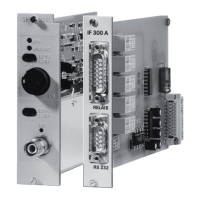What to do if the interface is defective on my Pfeiffer Vacuum TPG 300 Controller?
- JJames MartinezSep 6, 2025
If the interface on your Pfeiffer Vacuum Controller is defective, replace the interface and relay plug-in board.

What to do if the interface is defective on my Pfeiffer Vacuum TPG 300 Controller?
If the interface on your Pfeiffer Vacuum Controller is defective, replace the interface and relay plug-in board.
What to do if the TPR gauge is defective on my Pfeiffer Vacuum TPG 300?
If the TPR gauge on your Pfeiffer Vacuum Controller is defective, replace the gauge.
What to do if there is a TPR cable open circuit on my Pfeiffer Vacuum TPG 300?
If there is a TPR cable open circuit in your Pfeiffer Vacuum Controller, replace the cable.
What to do if the TPR gauge is not connected to my Pfeiffer Vacuum Controller?
If the TPR gauge is not connected to your Pfeiffer Vacuum Controller, connect the gauge.
What does «no P» displayed mean on my Pfeiffer Vacuum TPG 300?
If «no P» is displayed on your Pfeiffer Vacuum Controller, install the appropriate plug-in board.
What to do if a key is pushed on my Pfeiffer Vacuum TPG 300 Controller?
If a key is pushed on your Pfeiffer Vacuum Controller, release the key.
| Display | LCD |
|---|---|
| Communication Interfaces | RS232, RS485, Ethernet |
| Temperature Range | 0 to 50 °C |
| Accuracy | Dependent on connected gauges |
| Outputs | Analog, Relay |
| Operating Temperature | 0°C to +50°C |
| Dimensions | 96 mm x 96 mm |
| Type | Pirani Gauge Controller |
Provides essential safety precautions and guidelines for handling the equipment.
General overview of installation options for the TPG 300 unit.
Details how to install the TPG 300 into a control panel.
Explains the correct procedures and precautions for connecting the unit to mains power.
Instructions for installing the TPG 300 in a 19" rack frame.
Identifies and describes the components and displays on the TPG 300's front panel.
Step-by-step guide for safely powering the TPG 300 unit on and off.
Explains how to use the TPG 300 for pressure measurements, including data validity and accuracy.
Outlines the three main operating modes of the TPG 300: sensor, set point, and set up.
Describes the standard operating mode, used for displaying measurement values and status information.
Explains how to manually switch individual measuring circuits on or off.
Describes the mode for reading, entering, and modifying threshold values for switching functions.
Details the functions of switching circuits 1-4 and A-B, and their assignment to relays or cold cathode gauges.
Guides on saving user or default parameters and activating immediate start-up.
Describes the mode for reading, entering, and modifying parameters and running test programs.
Describes how to define upper and lower thresholds for each switching function, including hysteresis.
Lists potential error messages, their causes, and recommended corrections for the TPG 300.
Details common operational and calibration issues and their solutions for the TPG 300.
Describes how to send commands to switch circuits and retrieve measurement values and status.
Details commands for setting thresholds and assigning switching functions to measuring circuits.
